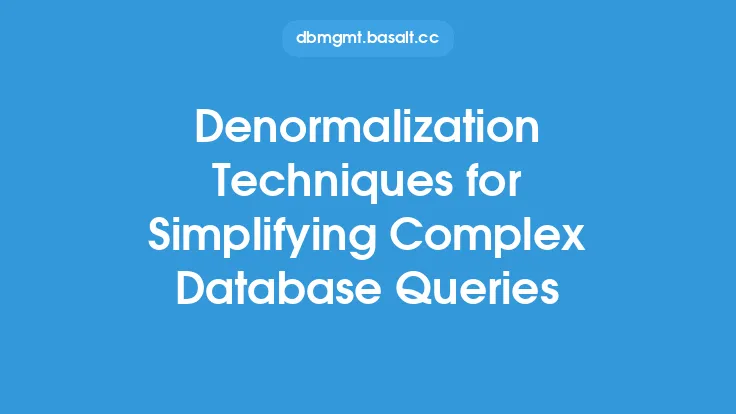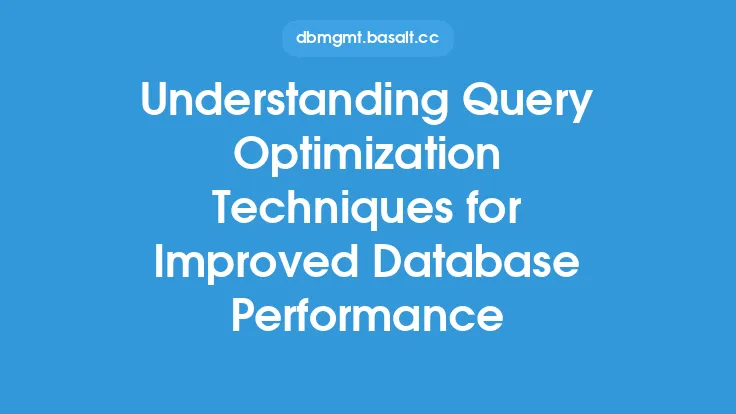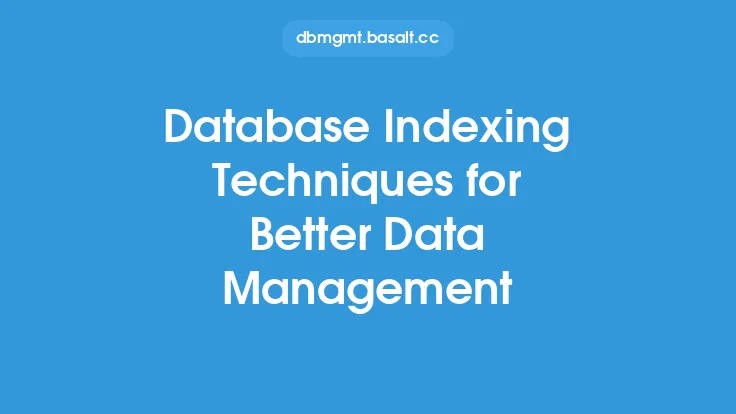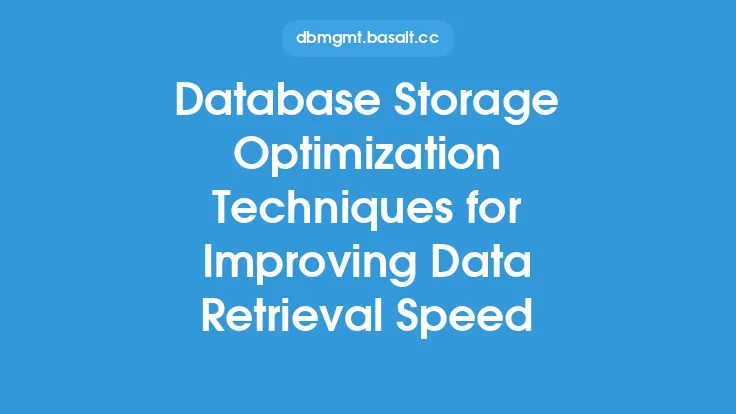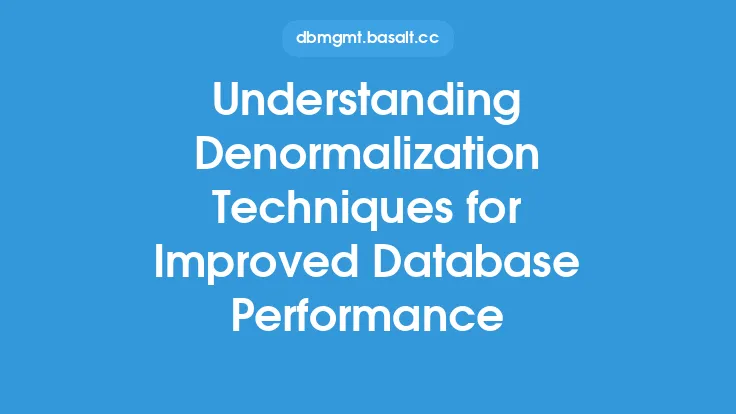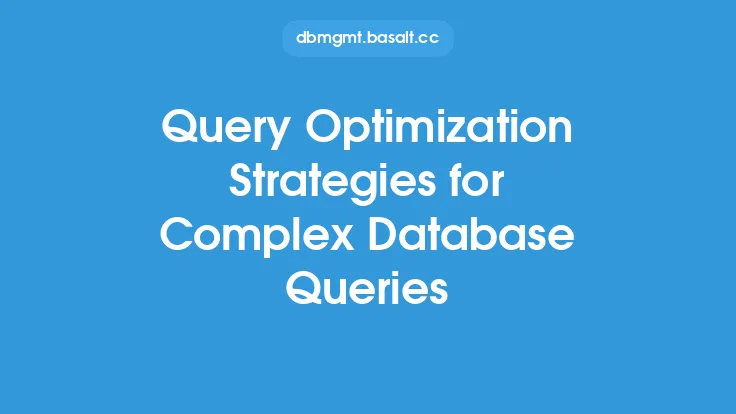Database queries can be a significant bottleneck in the performance of a database system, leading to increased latency and decreased throughput. One technique to mitigate this issue is cache prefetching, which involves anticipating and loading data into the cache before it is actually requested by a query. This approach can help reduce the number of disk I/O operations, minimize query execution time, and improve overall system performance.
Introduction to Cache Prefetching
Cache prefetching is a technique used to anticipate and load data into the cache before it is actually requested by a query. This approach is based on the principle of temporal locality, which states that data that has been accessed recently is likely to be accessed again in the near future. By prefetching data into the cache, the database system can reduce the number of disk I/O operations, minimize query execution time, and improve overall system performance. Cache prefetching can be applied at various levels, including the database buffer cache, the operating system cache, and the disk cache.
Types of Cache Prefetching Techniques
There are several types of cache prefetching techniques that can be used in database systems, including:
- Sequential Prefetching: This technique involves prefetching data into the cache in a sequential manner, based on the assumption that the next block of data will be requested after the current block.
- Random Prefetching: This technique involves prefetching data into the cache in a random manner, based on the assumption that the next block of data will be requested randomly.
- Directed Prefetching: This technique involves prefetching data into the cache based on the direction of the query, such as prefetching data for a range query.
- Speculative Prefetching: This technique involves prefetching data into the cache based on speculation about future query requests.
Cache Prefetching Algorithms
Several cache prefetching algorithms have been proposed and implemented in database systems, including:
- The LRU-K Algorithm: This algorithm uses a combination of the least recently used (LRU) and the K-most recently used (K-MRU) policies to prefetch data into the cache.
- The OPT Algorithm: This algorithm uses an optimal replacement policy to prefetch data into the cache, based on the assumption that the optimal replacement policy is known in advance.
- The Prefetching Algorithm: This algorithm uses a combination of sequential and random prefetching to prefetch data into the cache.
Implementation of Cache Prefetching
Cache prefetching can be implemented in database systems using various techniques, including:
- Database Buffer Cache: The database buffer cache can be used to implement cache prefetching by prefetching data into the cache before it is actually requested by a query.
- Operating System Cache: The operating system cache can be used to implement cache prefetching by prefetching data into the cache before it is actually requested by a query.
- Disk Cache: The disk cache can be used to implement cache prefetching by prefetching data into the cache before it is actually requested by a query.
Benefits of Cache Prefetching
Cache prefetching can provide several benefits in database systems, including:
- Improved Performance: Cache prefetching can improve the performance of database systems by reducing the number of disk I/O operations and minimizing query execution time.
- Reduced Latency: Cache prefetching can reduce the latency of database systems by prefetching data into the cache before it is actually requested by a query.
- Increased Throughput: Cache prefetching can increase the throughput of database systems by allowing multiple queries to be executed concurrently.
Challenges and Limitations of Cache Prefetching
Cache prefetching can also pose several challenges and limitations, including:
- Cache Pollution: Cache prefetching can lead to cache pollution, where unnecessary data is prefetched into the cache, reducing the effectiveness of the cache.
- Cache Thrashing: Cache prefetching can lead to cache thrashing, where the cache is constantly being updated with new data, reducing the effectiveness of the cache.
- Increased Complexity: Cache prefetching can increase the complexity of database systems, requiring additional hardware and software resources to implement and manage.
Future Directions of Cache Prefetching
Cache prefetching is an active area of research, with several future directions, including:
- Machine Learning-based Cache Prefetching: Machine learning algorithms can be used to predict query patterns and prefetch data into the cache accordingly.
- Cloud-based Cache Prefetching: Cloud-based cache prefetching can be used to prefetch data into the cache across multiple machines and locations.
- Real-time Cache Prefetching: Real-time cache prefetching can be used to prefetch data into the cache in real-time, based on the current query workload.
Conclusion
Cache prefetching is a powerful technique for improving the performance of database systems by anticipating and loading data into the cache before it is actually requested by a query. Several types of cache prefetching techniques and algorithms have been proposed and implemented, including sequential prefetching, random prefetching, directed prefetching, and speculative prefetching. Cache prefetching can be implemented in database systems using various techniques, including the database buffer cache, operating system cache, and disk cache. While cache prefetching can provide several benefits, including improved performance, reduced latency, and increased throughput, it can also pose several challenges and limitations, including cache pollution, cache thrashing, and increased complexity. Future directions of cache prefetching include machine learning-based cache prefetching, cloud-based cache prefetching, and real-time cache prefetching.
